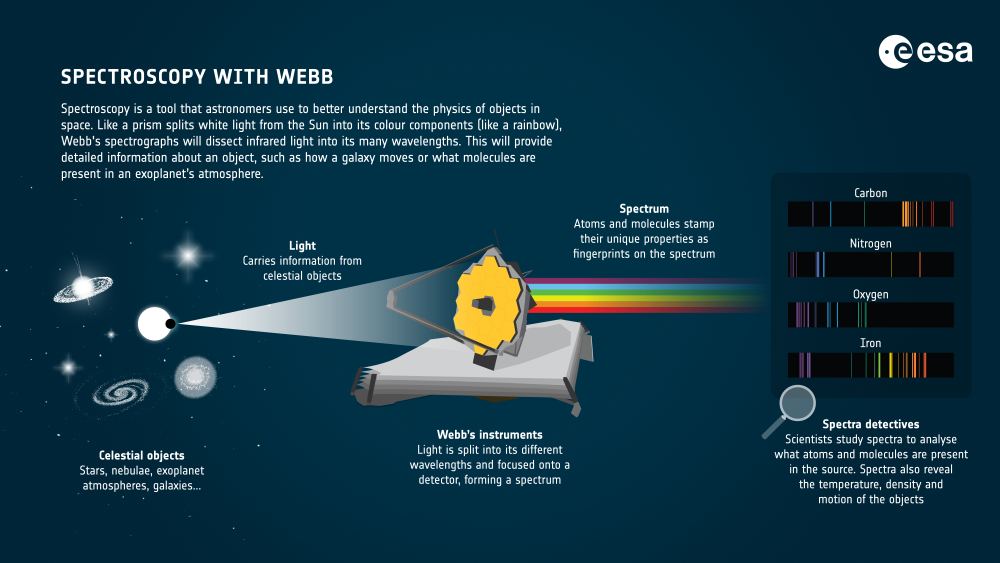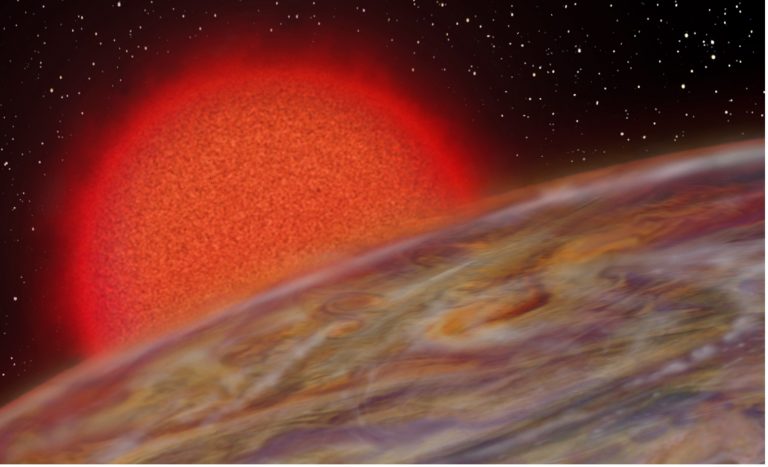Astronomers have spied three more exoplanets. But the discovery might not last long. Each planet is in a separate solar system, and each orbits perilously close to its star. Even worse, all of the stars are dying.
The results?
Three doomed planets.
TESS (Transiting Exoplanet Survey Satellite) and other planet-hunting endeavours have found thousands of exoplanets in the last few years and decades. The exoplanets vary widely, from Earth-like planets in their stars’ quiet habitable zones to planets so hot that vaporized iron falls as rain.
But these three exoplanets have something in common. They have very short-period orbits—some of the shortest ever found—around sub-giant or giant stars. For planets like these, the writing is on the wall: they’ll spiral inward towards their stars, which will eventually engulf them.
A team of researchers presented these grim findings in a new paper titled “TESS Giants Transiting Giants II: The hottest Jupiters orbiting evolved stars.” The Astronomical Journal accepted the paper, and it’s up on the pre-press site arxiv.org. Samuel Grunblatt is the lead author. He’s a postdoctoral fellow at the American Museum of Natural History and the Flatiron Institute.
The discovery might sound macabre: three doomed planets that’ll spiral inwards toward their end, with stars that are also inching towards death as they leave the main sequence. But that would be misrepresenting the discovery. Instead, think of it as planetary archaeology.
“These discoveries are crucial to understanding a new frontier in exoplanet studies: how planetary systems evolve over time,” Grunblatt said in a press release. “These observations offer new windows into planets nearing the end of their lives before their host stars swallow them up.”
The three planets are TOI-2337b, TOI-4329b, and TOI-2669b. TOI stands for Tess Object of Interest, and the number is the star. The “b” denotes the planet closest to the star in each system.

All of the planets are gas giants, similar to Jupiter in our Solar System. Astronomers found them during a survey looking for new planets orbiting evolved host stars. The worlds range from 0.4 to 1.8 Jupiter masses and 0.8 to 1.8 Jupiter radii. The stars range from about 1.2 to 1.5 solar masses and about 2.3 to 4.1 solar radii.
The planets have a wide range of densities, which indicates that each of the solar systems underwent a chaotic period of planet-to-planet interactions. Astronomers think that the history of those interactions contributed to the density variations through unpredictable heating rates and timescales.
The James Webb Space Telescope may be able to tease out some of the details in at least one of these systems. When it examines the TOI-4329 system, the presence or lack of water vapour and CO2 in the planet’s atmosphere could restrain the location where the planet formed. It could also provide insight into the types of planetary interactions that put the planet into its current orbit.

In planet-star configurations like these, astronomers expect the planets to inflate as they inch closer to the stars and as the stars expand. The stars will eventually engulf the planets as their orbits spiral inwards. So far, TESS hasn’t detected any evidence of a decaying orbit. But TESS found these planets during its Prime Mission. It’ll gather more data during its Extended Missions, and that data will form a longer baseline of observations. That more extended baseline may indicate that the planets are already in their death spirals.
Planetary inflation is becoming an important metric in understanding exoplanets. Why do some planets as massive as Jupiter have much greater radii? Gas giants experience radiative cooling from their inner depths, inhibiting inflation over long timescales, beginning shortly after formation. Proximity to a star might delay that cooling and promote inflation.
But there’s also growing evidence that proximity to a star can actively cause inflation through stellar flux. In a previous paper by lead author Greenblatt in 2017, the authors wrote, “Stellar flux flowing to the planets’ deep convective interiors could therefore explain their current size, an indication that planet ‘inflation’ is directly tied to stellar irradiation rather than delayed atmospheric cooling after the planets’ formation.”

But planetary inflation is a complicated issue. In the same 2017 paper, the authors write that “Planets may be inflated by methods that are more strongly dependent on other factors such as atmospheric metallicity than incident flux.”
Though there’s no indication of orbital decay in the planets yet, there is evidence of inflation for at least one planet. TOI-2337b has the shortest orbital period of any world ever found around a red giant star, but it shows no sign of inflation. The TOI-2669b system is the most evolved system of the three, yet the planet doesn’t show any signs of inflation either. TOI-4329b, however, does show signs of inflation.
TOI-2669b is a brighter target than the other two in this study. That makes it a good target for spectroscopy with the James Webb Telescope. That data, along with tighter constraints on the planet’s eccentricity, “… could place new constraints on planet inflation and migration mechanisms and timescales.”
The three planets in this study are just the beginning. TESS should find many more of them. “We expect to find tens to hundreds of these evolved transiting planet systems with TESS, providing new details on how planets interact with each other, inflate, and migrate around stars, including those like our Sun,” said Nick Saunders, a graduate student at UH IfA and co-author of the study.
TESS had some help in this work. While it found the planets with the transit method, those findings only reveal candidate exoplanets. Confirmation as exoplanets requires ground-based follow-up observations. The Keck Observatory provided those via its High-Resolution Echelle Spectrometer (HIRES) instrument. Data from HIRES fleshed out the discoveries.

“The Keck observations of these planetary systems are critical to understanding their origins, helping reveal the fate of solar systems like our own,” said UH IfA Astronomer Daniel Huber, who co-authored the study. Studies like this one might also be tiny steps towards answering humanity’s most significant question: Are we alone?
All of this might sound academic to a casual reader. But our own Sun will one day leave the main sequence and begin to expand into a red subgiant and will likely engulf Earth. It’s doubtful that humanity will survive until then since it won’t happen for billions of years. Extinctions are the norm here on Earth, but maybe humanity will somehow beat the cosmic odds.
In the meantime, at least we’re learning more about nature and the Universe we’re a part of.
More:
- Press Release: Newly-Found Planets On The Edge Of Destruction
- New Paper: TESS Giants Transiting Giants II: The hottest Jupiters orbiting evolved stars
- Universe Today: Astronomers Find a Planet That Orbits its Star in Just 16 HOURS!

